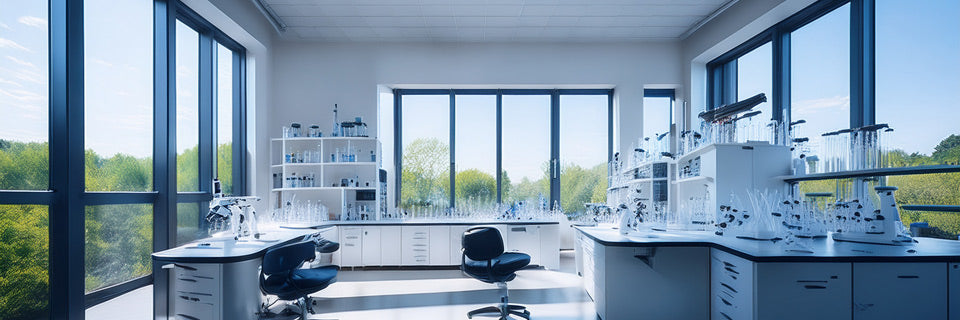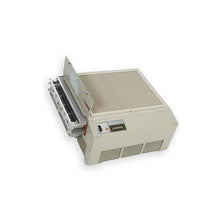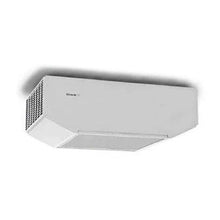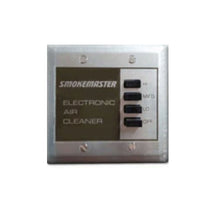Beyond Tobacco: Mastering the Unique Challenges of Herbal Smoke with Advanced Air Purification

The New Frontier of Air Quality Management
For facility managers, property owners, and business operators, addressing smoke odors and contaminants has long been a part of maintaining a habitable and safe environment. Traditional tobacco smoke has been the primary focus, leading to established solutions. However, a newer, far more complex challenge has emerged: the smoke and odors associated with modern herbal smoke products, including synthetic cannabinoid mixtures commonly known by street names like K2 or Spice. This type of smoke presents a unique, pungent, and often persistent odor profile that standard commercial air filtration systems frequently fail to neutralize completely. The necessity to remove K2 smoke smell or other unique smoke odor removal challenges demands a highly specialized and powerful solution.
At Commercial Air Purifiers, LLC, we understand that simply filtering particles isn't enough when dealing with the chemical complexity of synthetic compounds. This isn't just about an unpleasant odor; it's about managing potentially harmful airborne volatile organic compounds (VOCs) that can permeate materials and linger indefinitely. Our focus is to provide the expertise necessary to confront this issue head-on, ensuring your indoor air quality strategy is robust enough for these cutting-edge challenges. This detailed guide offers an authoritative look at the chemistry of these smokes and the advanced filtration technologies required to effectively mitigate their presence.
The Chemistry Problem: Why Synthetic Smoke is Different
The core issue lies in the chemical composition of the substances being combusted. Unlike natural tobacco, which contains well-understood classes of chemicals, synthetic cannabinoid products are often made by spraying lab-synthesized chemicals onto dried plant material.
Volatility and Complexity: The Airborne Threat
When these products are smoked, they release a highly complex and varied cocktail of chemicals into the air. This includes fine particulate matter (), similar to any smoke, but the gaseous component (VOCs) is what makes them so difficult to manage. The odors associated with these products are often described as harsh, chemical, or sickly sweet—a strong indicator of non-standard VOCs.
-
The Problem of Unregulated Compounds: The exact chemical structure of synthetic cannabinoid compounds changes frequently as manufacturers attempt to skirt legal regulations. This means the purification system must be capable of adsorbing a wide and unpredictable range of gaseous chemical structures, requiring a far more robust gas-phase filtration solution than typically found in standard systems. This is the central reason why ordinary herbal smoke air purifier strategies often fall short.
-
Persistent Odor Molecules: The specific VOCs released are often highly lipophilic (fat-soluble), meaning they readily adhere to surfaces like paint, fabric, and ventilation ductwork. This leads to the frustrating problem of being unable to truly remove K2 smoke smell even after the immediate smoke event has passed. This residue is what is known as thirdhand smoke, and it requires continuous, high-capacity filtration to manage.
Health Implications: An Authoritative View
The health risks associated with the active chemicals in synthetic cannabinoid products are well-documented by medical institutions. However, the health effects of inhaling the secondhand smoke from these compounds are also a serious concern for building occupants and staff. The National Institute on Drug Abuse (NIDA) highlights the unpredictable and potent effects of these synthetic compounds on the body. From an air quality perspective, this necessitates a precautionary approach: any air solution must be designed to aggressively remove these unknown, potentially harmful VOCs. This calls for the highest level of filtration we at Commercial Air Purifiers, LLC can provide, focusing on broad-spectrum chemical adsorption.
Expertise in Action: Deconstructing Synthetic Cannabinoid Air Filtration
Effective air purification for these unique chemical challenges requires a total shift in focus from standard particulate-only filtration. Our expertise dictates a multi-tiered, professional-grade approach, heavily weighted toward advanced chemical adsorption.
The Role of High-Mass Activated Carbon
While a True HEPA filter is essential for removing the particulate matter () component of the smoke, it does absolutely nothing for the odor-causing gases. For unique smoke odor removal and effective synthetic cannabinoid air filtration, the solution lies in activated carbon—but not just any carbon.
-
Mass Matters: Residential or light commercial purifiers often contain only a thin layer or a pound or two of carbon pellets. To tackle the tenacious VOCs from these products, a system requires a deep bed of highly porous activated carbon, often measured in several pounds. This provides the immense surface area needed for the physical process of adsorption, where gas molecules adhere to the carbon's surface.
-
Impregnated Media: For enhanced chemical breakdown, we recommend specialized chemisorptive media. This involves impregnating the activated carbon with chemical compounds, such as potassium permanganate or alumina, which chemically react with and neutralize the offending VOCs, rather than just trapping them. This is critical for breaking down some of the more complex or reactive chemical structures found in herbal smoke. This advanced step moves beyond simple odor control to true chemical mitigation.
Airflow and ACH: The Speed of Removal
Even with the best filters, if the air isn't moved fast enough, the smoke will linger and saturate surfaces. Our experience confirms that to effectively remove K2 smoke smell or similar aggressive odors, a high number of Air Changes Per Hour (ACH) is non-negotiable.
-
The 6-10 ACH Standard: For an environment dealing with chronic or frequent smoke load, Commercial Air Purifiers, LLC recommends selecting units capable of achieving at least 6 to 10 ACH in the room's calculated cubic footage. This rate ensures that the entire volume of air passes through the filtration media every six to ten minutes, preventing the chemical gases from adhering to surfaces long enough to become a permanent issue. This aggressive airflow, powered by high-CADR units, is the only way to stay ahead of the chemical deposition that causes long-term odors.
Experience and Real-World Application for Unique Smoke Odor Removal
Through our consultations with property managers and institutional facilities facing severe, persistent smoke challenges, we have developed hands-on experience in targeted odor eradication. A common scenario involves multi-unit residences or facilities where smoke drifts through shared ventilation or under doorways.
The Power of Localized Negative Pressure
In instances where smoke is contained within a specific zone (e.g., a room or apartment), a powerful commercial-grade air scrubber or purifier can be deployed to create a localized negative pressure environment.
-
How it Works: By placing a high-capacity filter system inside the affected room and allowing it to filter the air rapidly, you can create a slight negative pressure relative to the surrounding hallway or building. This means that air is constantly drawn into the affected room, preventing smoke-laden air from escaping through cracks, outlets, or under doors. The air is cleaned and recirculated within the room, rapidly lowering the and VOC concentration. This technique is highly effective for isolating and treating the intense odors associated with herbal smoke.
This aggressive, targeted approach contrasts sharply with the general, building-wide HVAC filtration, which is rarely sufficient to manage such a localized, high-pollutant load. The capability to deploy such powerful, specialized equipment is the hallmark of a commercial solution and critical to achieving true unique smoke odor removal.
Solutions and Recommendations for Herbal Smoke Air Purifier Deployment
For any business or facility manager tasked with eliminating the pungent and complex odors from herbal smoke, our recommendations are clear and action-oriented:
-
Do Not Compromise on Carbon Mass: Prioritize commercial-grade systems that contain between 15 to 40 pounds of high-quality, specialized activated carbon media. Simple carbon mesh is ineffective for synthetic cannabinoid air filtration.
-
Verify the CADR for ACH: Calculate the cubic footage of your most affected space and select units whose combined Clean Air Delivery Rate (CADR) can achieve at least 6 ACH. This ensures rapid dilution and removal of airborne contaminants.
-
Consider Chemical Impregnation: Look for carbon media impregnated with specialized chemical oxidizers to enhance the removal of complex and volatile organic compounds specific to unique smoke odor removal challenges. This is the advanced step that pushes a standard solution into an herbal smoke air purifier solution.
-
Embrace Continuous Operation: Due to the risk of thirdhand smoke off-gassing, these units should run continuously, ideally utilizing energy-efficient ECM motors to mitigate electricity costs while maintaining round-the-clock air quality control.
Credible Conclusion and Next Steps
The proliferation of unique, chemically complex herbal smoke poses a significant, evolving challenge to indoor air quality. Successfully mastering synthetic cannabinoid air filtration requires moving beyond conventional methods and adopting professional-grade, specialized equipment.
At Commercial Air Purifiers, LLC, our commitment to providing powerful, scientifically-backed unique smoke odor removal solutions is reflected in our recommendation of high-mass, multi-stage filtration systems featuring True HEPA and specialized deep-bed activated carbon. By implementing these strategic, commercial-level solutions, you are not just masking an odor; you are chemically mitigating a complex pollutant load, creating a measurably healthier and more habitable environment. Your next step should be a detailed air quality assessment to determine the right size and type of high-capacity system needed to truly remove K2 smoke smell and other persistent odors.
Frequently Asked Questions (FAQ)
Q: Can a standard residential HEPA air purifier handle synthetic smoke? A: No. A standard residential unit will remove some of the particulate matter (), but its carbon filter is far too small and insufficient to adsorb the high concentration and complex volatility of the gases and odors released by herbal smoke products like K2 or Spice. Commercial-grade systems are essential for effective synthetic cannabinoid air filtration.
Q: Is it necessary to have both HEPA and Activated Carbon for this type of smoke? A: Absolutely. Smoke is a combination of solid particles (removed by HEPA) and gas/vapor (removed by carbon). You must use both stages. Focusing only on the odor (gas) while ignoring the fine particulate matter would be an incomplete and unsafe herbal smoke air purifier solution.
Q: What is the lifespan of the specialized carbon filter when dealing with heavy smoke? A: The lifespan is heavily dependent on the mass of the carbon and the usage intensity. For an environment with frequent, heavy smoke, the carbon will saturate faster. With a commercial-grade, deep-bed system (15+ pounds), the carbon media may last 6 to 12 months. Regular monitoring is necessary, as the system’s ability to remove K2 smoke smell will noticeably diminish once the carbon is saturated.
Q: Does ventilation (opening windows) solve the issue of unique smoke odor removal? A: Natural ventilation helps with immediate smoke dilution but does not fully address the problem. It cannot filter the air and is ineffective against the thirdhand smoke residue left on surfaces. Furthermore, opening windows introduces untreated outside air. Professional, high-ACH filtration is required to actively clean the air and prevent chemical deposition.





